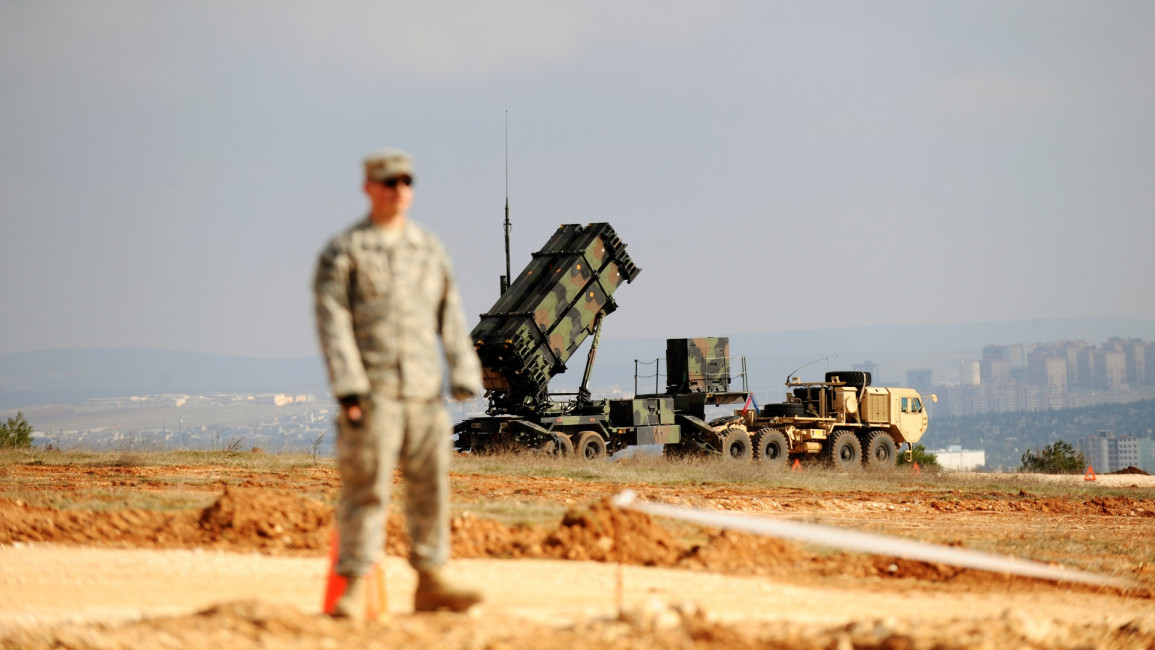US pulls Patriot anti-missile systems from Saudi Arabia amid oil dispute
The official said the decision removes two batteries that were guarding oil facilities in Saudi Arabia but leaves two Patriot batteries at Prince Sultan Air Base in the Saudi desert, along with other air defence systems and jet fighters.
The decision scales back the American presence in Saudi Arabia just months after the Pentagon began a military build-up there to counter threats from Iran.
About 300 troops that staff the two batteries would also leave Saudi Arabia, according to the official, who spoke on condition of anonymity to discuss sensitive military operations.
The move comes as the US has sent Patriot systems into Iraq to protect American and allied troops there, who came under an Iranian missile attack earlier this year. The US Army has a limited number of the systems, and they routinely must be brought home for upgrades.
Two other Patriot batteries that are in the Middle East region are also heading home to the US, in a planned redeployment for maintenance and upgrades.
Twitter Post
|
However it is not clear whether the ongoing oil dispute or the struggle to parcel out the much-coveted Patriot systems was the key factor in the US decision to pull systems out of the kingdom.
When Saudi Arabia ramped up oil production and slashed prices this year, Republicans accused the kingdom of exacerbating instability in the oil market, which was already suffering because of the coronavirus pandemic.
The volatility and price crash in oil hurt US shale producers, leading to layoffs in the industry, particularly in Republican-run states.
Some Republican senators warned in late March that if Saudi Arabia did not change course, it risked losing American defence support and facing a range of potential “levers of statecraft” such as tariffs and other trade restrictions, investigations and sanctions.
The US official said a THAAD anti-ballistic missile defense system will also remain in Saudi Arabia. The THAAD complements the Patriots by providing a defense against ballistic missiles traveling outside Earth’s atmosphere.
The Saudi government and the Saudi Embassy in Washington did not immediately respond to a request for comment. State-run media in the kingdom similarly did not immediately acknowledge the troop removal.
The Pentagon announced last year that it would begin deploying forces and Patriot batteries to Prince Sultan Air Base, a former US military hub. The move was one of the more dramatic signs of America’s decision to beef up troops in the Middle East in response to threats from Iran.
When General Frank McKenzie, a top US commander for the Middle East, visited the base earlier this year, the US troop presence had grown to roughly 2,500. At the time, McKenzie told reporters with him that the base was a key strategic location, but that continued presence of troops and weapons there would depend on other national security needs around the world.
In-depth: Oil price truce: The Russia-Saudi standoff is over. But at what cost?
Tensions with Iran escalated throughout last summer and fall, as the US blamed Tehran for using mines to target oil tankers near the strategic Strait of Hormuz and for attacking Saudi oil facilities. Violence peaked when the US carried out a drone strike in Iraq that killed Qasem Soleimani, Iran’s top general.
Several days later, Iran responded by firing ballistic missiles at Ain al-Asad air base in Iraq where US troops were stationed, causing more than 100 to be diagnosed with traumatic brain injury.
At the time of the attack, the US had no Patriot defenses at those bases because it judged other locations, such as those in Saudi Arabia and elsewhere in the Gulf, to be more susceptible to an Iranian attack.
Following the strike however, the US decided to move Patriots into Iraq to give troops more protection from missiles.
Tensions with Iran have flared continually since January. Iranian boats harassed US warships in Gulf waters last month, the day after suspected Iranian soldiers briefly seized control of a Hong Kong-flagged oil tanker.
Follow us on Facebook, Twitter and Instagram to stay connected



